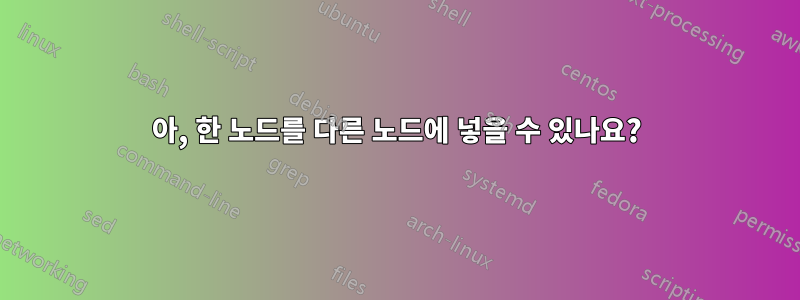
while 루프와 그 내부의 일부 작업을 사용하여 흐름도 다이어그램을 만들고 싶습니다. 나는 다음과 같은 라텍스 코드를 작성했습니다.
\documentclass[12pt, a4paper]{article}
\usepackage[utf8]{inputenc}
\usepackage[russian]{babel}
\usepackage{listings}
\usepackage{tikz}
\usetikzlibrary{arrows.meta,
chains,
positioning,
quotes,
shapes.geometric,
shapes.multipart,
babel
}
\oddsidemargin=-15.4mm
\textwidth=190mm
\headheight=-32.4mm
\textheight=277mm
\tolerance=100
\parindent=0pt
\parskip=8pt
\pagestyle{empty}
\makeatletter
\tikzset{FlowChart/.style={ % <--- corrected, new
base/.style = {draw,
minimum width=3cm, minimum height=1cm, align=center,
outer sep=0pt,
on chain, join=by arrow},
startstop/.style = {base, rounded corners, fill=blue!30},
process/.style = {base, fill=orange!30},
decision/.style = {base, diamond, aspect=1.3, fill=green!30},
io/.style = {base, trapezium, trapezium stretches body,
trapezium left angle=70, trapezium right angle=110,
fill=red!30,
text width =\pgfkeysvalueof{/pgf/minimum width} - 2*\pgfkeysvalueof{/pgf/inner xsep}
},
loop/.style = {base, rectangle split, rectangle split parts=2,
fill=gray!50},
arrow/.style = {thick,-Triangle},
% suspend
suspend join/.code={\def\tikz@after@path{}}
}
}% end of tikzset
\makeatother
\begin{document}
{\textbf{Задача 2.}}
\\
Схема алгоритма:
\\
\begin{center}
\begin{tikzpicture}[FlowChart,
node distance = 1cm and 3cm,
start chain = A going below
]
\node (start) [startstop] {Start};
\node (input) [io] {Input n};
\node (for) [loop]{
\nodepart{one} for i = 1; i<len(n); i++
\nodepart{two} Output n[i].
};
\node (stop) [startstop, below of=for] {End of programm};
\end{tikzpicture}
\end{center}
\end{document}
현재 나는 이것을 얻습니다 :
for-loop 노드 안에 "출력 노드"를 어떻게 넣을 수 있나요? 또한 다른 프로그램의 경우 전체 결정 노드를 for 루프에 배치해야 합니다. 이것이 가능합니까?
답변1
두 번째(약간 더 복잡한) 예:
\documentclass[12pt, a4paper]{article}
\usepackage[russian]{babel}
\usepackage{listings}
\usepackage{tikz}
\usetikzlibrary{arrows.meta,
chains,
fit, % new
positioning,
quotes,
shapes.geometric,
shapes.multipart,
babel
}
\usepackage[margin=10mm]{geometry}
\tolerance=100
\parindent=0pt
\parskip=8pt
\pagestyle{empty}
\makeatletter
\tikzset{FlowChart/.style={
base/.style = {draw,
minimum width=3cm, minimum height=1cm, align=center,
outer sep=0pt},
startstop/.style = {base, rounded corners, fill=blue!30},
process/.style = {base, fill=orange!30},
decision/.style = {base, diamond, aspect=1.3, fill=green!30},
FIT/.style = {base, semithick, inner sep=3mm, fit=##1}, % new
io/.style = {base, trapezium, trapezium stretches body,
trapezium left angle=70, trapezium right angle=110,
fill=red!30,
text width =\pgfkeysvalueof{/pgf/minimum width} - 2*\pgfkeysvalueof{/pgf/inner xsep}
},
loop/.style = {base, rectangle split, rectangle split parts=2,
fill=gray!50},
arrow/.style = {thick,-Triangle},
% suspend
suspend join/.code={\def\tikz@after@path{}}
}
}% end of tikzset
\makeatother
\begin{document}
\begin{center}
\begin{tikzpicture}[FlowChart,
node distance = 5mm and 7mm,
start chain = going below
]
\node (d1) [decision] {$n>0$};
\node (d2) [process,
below right=of d1.south] {n=n+1};
\coordinate[below=of d1 |- d2.south] (aux1);
\node (d3) [io,
below=of aux1] {output};
%
\draw (d1) -| node[pos=0.25,above] {Yes} (d2) |- (aux1)
(d1.west) -- node[pos=0.25,above] {No} ++
(-1,0) coordinate (aux2) |- (aux1);
\draw[arrow] (aux1) -- (d3);
% fit
\node (f1) [FIT=(d1) (aux2) (d2) (d3)] {};
\node (f2) [FIT=(f1.north west) (f1.north east),
inner sep=0pt,
above=0pt of f1]
{for $j=1$; $j<\mathrm{len}(r)$; $j+1$};
\end{tikzpicture}
\end{center}
\end{document}
메모:
- 이 이미지에서는
FlowChart스타일을 변경합니다. 따라서 이제 이 새 버전으로 수정/채택되었습니다. 이전 질문을 참조하세요. - 첫 번째 스케치는 위와 같은 방법으로 그릴 수 있습니다. 주요 차이점은 노드가 하나만 포함된다는 점입니다(
io).
부록:
이렇게 구성된 이미지가 하나만 있다고 가정하면 해당 구성으로 그리기를 시작할 수 있으며 여기에 노드 위와 f2아래에 노드를 추가할 수 있습니다 f1. 이를 위해서는 기존 스타일을 교체해야 합니다.
arrow/.style = {thick,-Triangle},
화살표가 반대 방향으로 향하는 두 개의 새로운 항목이 있습니다.
arr/.style = {thick,-Triangle},
arl/.style = {thick,Triangle-},
MWE 완료:
\documentclass[12pt, a4paper]{article}
\usepackage[russian]{babel}
\usepackage{listings}
\usepackage{tikz}
\usetikzlibrary{arrows.meta,
chains,
fit, % new
positioning,
quotes,
shapes.geometric,
shapes.multipart,
babel
}
\usepackage[margin=10mm]{geometry}
\tolerance=100
\parindent=0pt
\parskip=8pt
\pagestyle{empty}
\makeatletter
\tikzset{FlowChart/.style={
base/.style = {draw,
minimum width=3cm, minimum height=1cm, align=center,
outer sep=0pt},
startstop/.style = {base, rounded corners, fill=blue!30},
process/.style = {base, fill=orange!30},
decision/.style = {base, diamond, aspect=1.3, fill=green!30},
FIT/.style = {base, semithick, inner sep=3mm, fit=##1}, % new
io/.style = {base, trapezium, trapezium stretches body,
trapezium left angle=70, trapezium right angle=110,
fill=red!30,
text width =\pgfkeysvalueof{/pgf/minimum width} - 2*\pgfkeysvalueof{/pgf/inner xsep}
},
loop/.style = {base, rectangle split, rectangle split parts=2,
fill=gray!50},
arr/.style = {thick,-Triangle},
arl/.style = {thick,Triangle-},
% suspend
suspend join/.code={\def\tikz@after@path{}}
}
}% end of tikzset
\makeatother
\begin{document}
\begin{center}
\begin{tikzpicture}[FlowChart,
node distance = 5mm and 13mm,
start chain = A going above,
start chain = B going below
]
% nodes in node
\node (d1) [decision] {$n>0$};
\node (d2) [process,
below right=of d1.south] {n=n+1};
\coordinate[below=of d1 |- d2.south] (aux1);
\node (d3) [io,
below=of aux1] {output};
%
\draw (d1) -| node[pos=0.25,above] {Yes} (d2) |- (aux1)
(d1.west) -- node[pos=0.25,above] {No} ++
(-1,0) coordinate (aux2) |- (aux1);
\draw[arr] (aux1) -- (d3);
% fit
\begin{scope}[nodes={on chain=B, join= by arr}]
\node (f1) [FIT=(d1) (aux2) (d2) (d3)] {};
% nodes below f1
\node (output) [io,
below=of f1] {Вывод pow};
\node (stop) [startstop] {Конец программы};
\end{scope}
\begin{scope}[nodes={on chain=A, join= by arl}]
\node (f2) [FIT=(f1.north west) (f1.north east),
inner sep=0pt,
above=0pt of f1]
{for $j=1$; $j<\mathrm{len}(r)$; $j+1$};
% nodes above f2
\node (ds1) [decision,
above=of f2] {$n = 0?$};
\node (input) [io] {Ввод n};
\node (start) [startstop] {Начало};
\end{scope}
\node (y-case) [process,right=of ds1] {pow = 1};
%
\draw[arr] (ds1) to ["Yes"] (y-case);
\draw[arr] (y-case) |- (f2);
\draw[arr] (ds1.west) to [pos=0.2, "No" '] ++ (-3,0) |- (f2); % new
\end{tikzpicture}
\end{center}
\end{document}
물론 위의 방법은 문제를 해결하는 방법 중 하나일 뿐입니다. 다른 것 중 하나는 내부 노드에 대한 이미지를 별도로 그려서 일부에 저장하고 \savebox선택한 노드에서보다 사용하는 것입니다 \node [...] {\usebox{˙<\saveboxname>}. 이 옵션을 표시하려면 여유 시간이 더 필요합니다.







